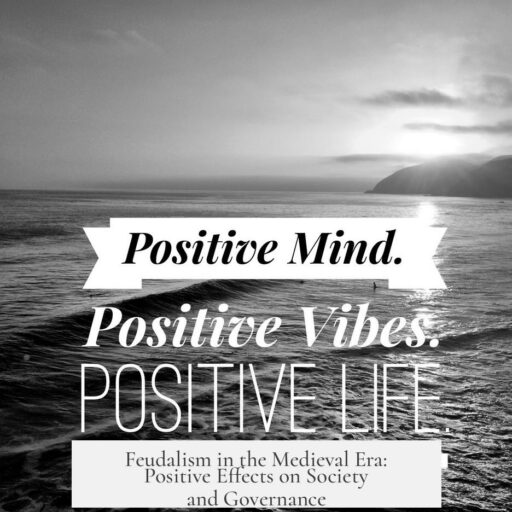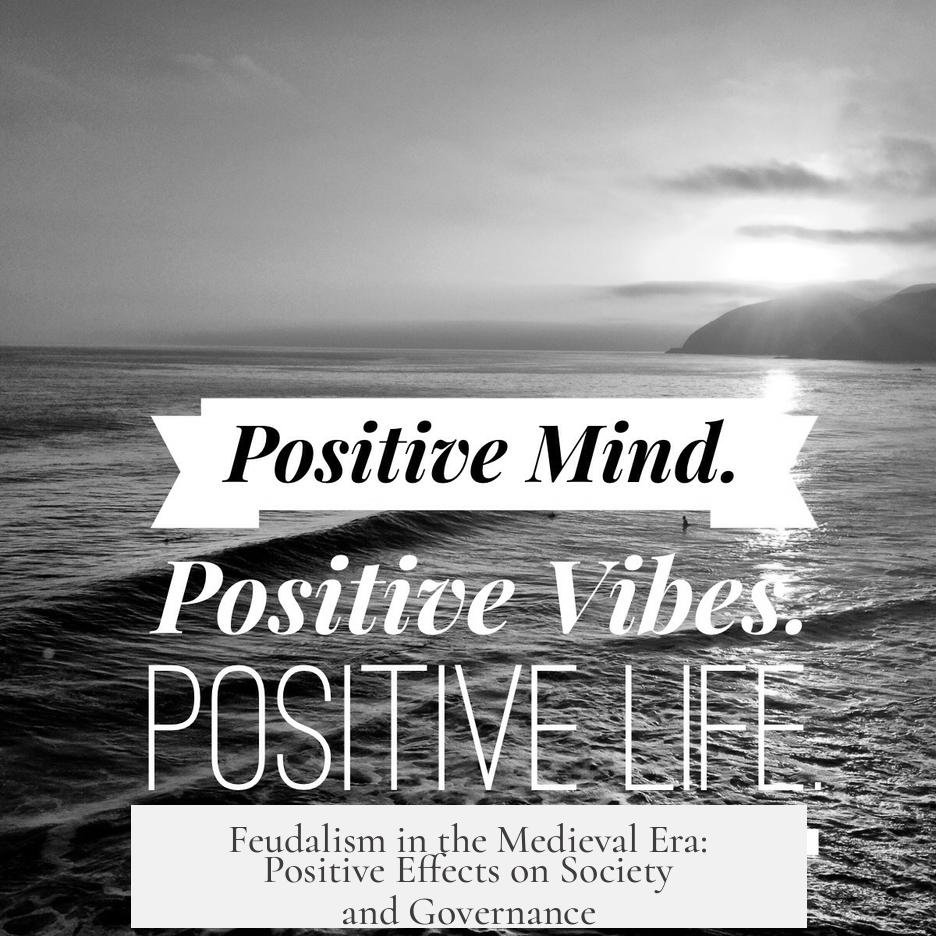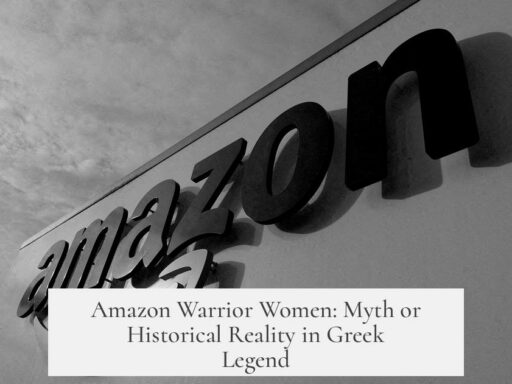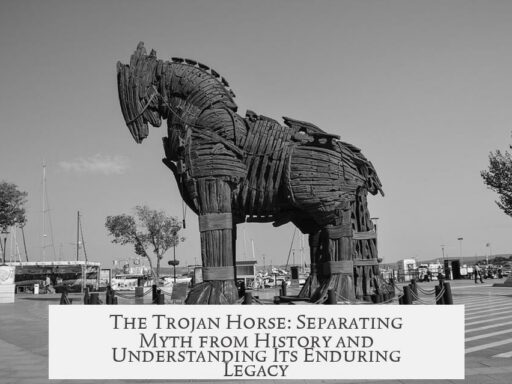Feudalism in the medieval era brought several positive effects, particularly in providing protection, fostering local governance, and supporting social stability during times of political chaos.

Feudalism was not a uniform system but varied widely with time and location. This variability shaped its impact. For instance, 12th-century England and 13th-century France had different implementations.
The most notable benefit was security. After the collapse of the Roman and Carolingian empires, political structures fragmented, and external threats like Vikings and bandits were common. Feudal lords had the military and logistical capacity to defend their estates and surrounding communities. This protection made rural life safer. Lords organized militias and managed supplies, which fostered a more stable environment for peasants and townspeople.

Feudalism also served as a localized governmental system during times when centralized authority was weak. Rather than relying on distant kings or emperors, communities depended on local nobles who administered justice and managed land. In many regions, especially in France, some towns held royal charters granting them self-governance, which provided urban residents with autonomy separate from noble control. This diversity in governance allowed for more responsive and varied political arrangements.
Within the feudal system, there were opportunities for some peasants to improve their social standing by acquiring land. Although success was rare and risky—some ended worse off by trying—instances of peasants evolving into small landholders occurred. Further, not all agricultural workers were unfree serfs. Some were free small-holders who owned and passed down land. They occasionally used legal means to defend their rights, showing a degree of personal autonomy within manorial life.

Manorialism, often conflated with feudalism, referred to the management of agricultural estates and the relationship between lords and peasants. While Marxist critiques highlight exploitation in this system, separating manorialism from feudalism clarifies that the latter centered more on noble relationships and landholding structures, which could be more flexible. For example, many nobles had land held outright and passed by inheritance without military service obligations. This variety often translated to less oppressive rule for some subjects.
Feudal estates contained complex social layers. Unfree workers and tenant farmers sometimes lived closely, even intermarrying. Serfs often had customary rights, including land they effectively controlled and could inherit. Their obligations mainly involved spending part of their time working the lord’s land. Outside of harvest seasons, these workers enjoyed significant leisure time, participated in strong community life, and observed religious holidays, supporting social cohesion and quality of life.

Besides agriculture, an increasing number of people worked in towns as artisans and merchants. Many towns operated under royal charters, granting self-government. This urban autonomy meant that feudalism accommodated diverse economic roles beyond farming, fostering growth in commerce and crafts.
Lastly, feudalism was a rational response to historical challenges. With fragmented political landscapes and constant threats, localized control by lords ensured survival. A martial, decentralized society was preferable to chaotic violence and state failure. Feudal ties structured loyalties, defense, and resource exchange effectively under conditions where centralized power faltered.

| Positive Effects of Feudalism |
|---|
| Provided organized protection against invasions and banditry. |
| Enabled localized governance and judicial authority. |
| Offered some peasants chances to acquire land and improve status. |
| Allowed for diversity in landholding and reduced absolute oppression. |
| Supported social complexity with customary rights and family ties. |
| Coexisted with self-governing towns and alternative livelihoods. |
| Provided significant leisure and community life for workers. |
- Feudalism was adaptable and varied across regions and periods.
- It ensured security in unstable times through local military power.
- Not all agricultural workers were unfree; some owned and defended land.
- Urban areas often had charters allowing self-government.
- Strong community bonds and leisure time improved rural life quality.
- Feudalism played a key role in maintaining order after empire collapses.
Feudalism in the Medieval Era: Were There Any Positive Effects?
It turns out feudalism, often painted as a medieval villain, actually offered some noteworthy positives. Yes, times were tough and inequality was real. But the feudal order also brought protection, stability, and social complexity that helped societies survive turbulent times. Let’s dive into the lesser-known perks of this ancient system.

First, a quick reality check: feudalism was not a one-size-fits-all deal. It changed with location and time so broadly that sweeping judgments miss the mark. It’s like saying all coffee is the same—try that in Italy, and you’ll get unanimous eye rolls.
The Many Flavors of Feudalism
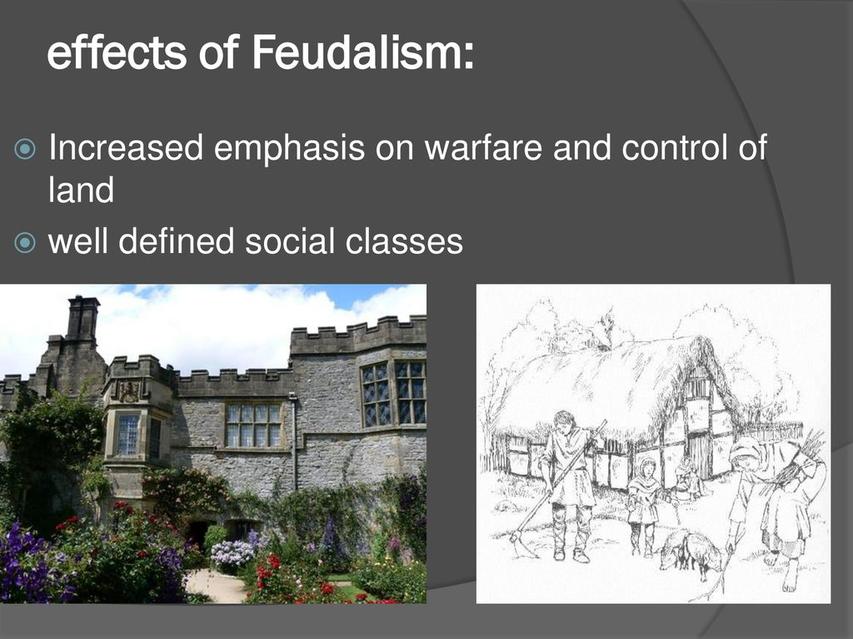
Feudalism’s meaning shifts depending on the century and region. What 12th-century England meant by feudal bonds differs quite a bit from what 13th-century France practiced. Historians argue endlessly about what “feudalism” even fully means. This variability speaks volumes about its mixed effects.
Imagine living where local lords carry real power. These lords could raise men and resources quickly. If bandits or Vikings appeared, they provided actual defense. That’s a key positive: protection from external threats. The lord’s estate wasn’t just a fancy house. It was a fortress, a command center, and a supply hub. For peasants huddling on the countryside, that meant survival wasn’t left to luck.
Order Amid Chaos: Security and Stability
After the collapse of the Roman Empire, political chaos was the norm. With no strong central power, local safety mattered most. Feudalism filled this gap brilliantly. Instead of getting wiped out by roaming thugs or Vikings, people had a framework to organize defense. Martial society wasn’t a choice so much as a necessity. Better a feudal lord’s rule than anarchy’s random violence.
But security wasn’t just walls and soldiers. Lords also managed trade routes, distributed supplies, and ensured some economic balance within their domains. This contributed to community survival.
Feudalism and the Peasantry: More Than Just Exploitation
Sure, the peasants weren’t royalty, but life under feudalism had some surprises. Contrary to popular belief, agricultural workers weren’t all chained serfs with zero rights. Many were “small-holders”—farmers who owned or inherited land. These tenants took legal actions against nobles, showing they wielded some agency.
Feudal estates actually had a patchwork of social arrangements. Unfree workers might share property and even marry tenant farmers. These overlapping roles softened the image of harsh oppression.
Interestingly, despite their status, many peasants enjoyed a decent quality of life. The agricultural calendar meant busy harvest seasons paired with downtime, religious holidays, and plenty of family interaction. Compared to the industrial worker’s 20th-century grind, medieval workers had more leisure and community support.
Climbing the Ladder, Sometimes
Hold on, can a peasant landowner exist? Surprisingly, yes. Some peasants managed to cobble together their own land. Although risky and rare—sometimes these ambitious souls went broke—opportunities for upward social mobility weren’t entirely absent.
This possibility added a dynamic social layer. Feudalism wasn’t a static chain attached to everyone’s ankle.
Separating Feudalism and Manorialism
Conflating feudalism with manorialism muddies the historical waters. It helps to distinguish:
- Feudalism is about the ties between nobles—land-for-military service.
- Manorialism focuses on the economics of an estate and the peasants working it.
Much of the criticism arises from manorial exploitation—not feudal governance. This clarity helps us appreciate feudalism’s institutional positives outside agricultural oppression.
Local Autonomy and Flexible Governance to the Rescue
Feudalism allowed diverse landholding and governance styles. Some nobles held land outright, not tied to any military duty. Many towns in France had royal charters granting self-government. These self-governing municipalities offered alternatives to noble dominance. Artisans and merchants thrived in urban pockets, steering clear of manorial farm life.
This flexibility meant feudalism wasn’t an iron fist but more like a velcro patchwork. Local rulers adjusted to their people’s needs, sometimes granting considerable freedoms.
Feudalism as Effective Crisis Governance
Think about disaster scenarios today. When large institutions fail, smaller local organizations step up. Feudalism worked similarly. It was a pragmatic governance system created by and for a fragmented post-imperial world.
Rather than waiting for a distant ruler, people relied on lords who personally knew their lands and communities. It’s like calling your neighbor for help instead of 911 when the phone lines are dead.
Urban Life, Diverse Roles, and New Opportunities
Even during feudal dominance, many townspeople escaped the rural manorial system. With king-issued charters, towns gained the right to self-rule. Merchants and artisans flourished, contributing to economic diversity. These emerging classes signaled the beginnings of social transformation beyond feudal constraints.
Community and Leisure: The Unsung Benefits
Medieval agricultural workers had inherent social bonds—family, neighbors, festivals—that reinforced tight-knit communities. There was a rhythm of work and rest that isn’t often recognized. Breaks during non-harvest seasons and religious holidays gave workers breathing room.
So, while the system had clear limitations, quality of life for some was better than commonly assumed.
Wrapping Up: Feudalism’s Positive Legacy
So, was feudalism all doom and gloom? Not quite. It offered protection from chaos, practical governance, social complexity, and some scope for individual advancement. It wasn’t perfect but suited the volatile times.
Next time feudalism gets an unfair rap, remember: it kept people safe, fostered communities, and created pockets of freedom in a harsh era.
Did you know that some medieval peasants could actually sue noble landlords? Talk about turning the tables! Feudalism wasn’t a monolithic monster but a patchwork of human relationships and local arrangements. Isn’t that a refreshing way to look at history?
